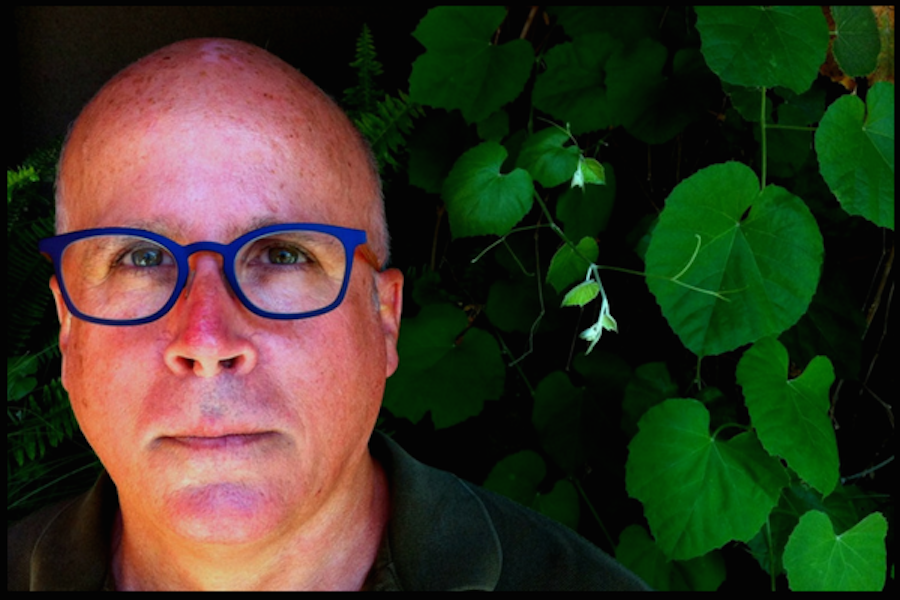The Burden of My Survival

For several years now, I’ve looked forward to October 26th. I’ve been fortunate to be allowed space on mariashriver.com on this date each year to share my story, and to be included among Maria’s pantheon of Architects of Change. Given the company I’m in — people whose lives, lessons and accomplishments serve to inspire, enrich and empower — it’s one of my own most satisfying accomplishments.
But in truth, it isn’t October 26th I look forward to as much as the 27th, because that’s when I woke up. In 2012, the 26th of October was when I tried to kill myself.
Each year since then I’ve described what happened in the days after that bad day (a mental hospital), learning about and coming to terms with my mental illness (bipolar disorder), and staying alive and healthy (therapy and meds). In the process I’ve tried to be open about my experience, in hopes of chipping away at the stigma surrounding mental illness and suicide.
I still see faces tense up, with jittery smiles across gritted teeth, when I mention in conversation, “I know something about suicide. I made an attempt on my life several years ago.”
Sometimes, referring to the battery of antidepressants and mood stabilizers that help me function and stay safe, I’ll point to myself and say, “What you see here — it’s hiiiiiighly medicated.” People laugh nervously at that, too.
Levity, or talking about the subject at all, isn’t right for everybody, but it has been the right and natural thing for me. But this year the anticipation felt different. As today’s date has approached, I saw my task as something of a chore.
“I have to write my ‘Maria piece,’” I said to my husband.
“You don’t sound very excited about it.” After 25 years he can tell when I’m excited and when I’m not.
“No, I am,” I replied with unconvincing enthusiasm.
A few months ago, a New York Times opinion writer named Pagan Kennedy wrote about the great novelist William Styron’s battle with depression, one he made public in a 1988 Times op-ed.
“Suicide remains a tragic and dreadful act,” Styron said, “but its prevention will continue to be hindered, and the age-old stigma against it will remain, unless we can begin to understand that the vast majority of those who do away with themselves — and of those who attempt to do so — do not do it because of any frailty, and rarely out of impulse, but because they are in the grip of an illness that causes almost unimaginable pain.”
Ms. Kennedy wrote, “The response to Mr. Styron’s op-ed was immediate. Letters flooded into The New York Times. The readers thanked him, blurted out their stories and begged him for more. ‘Inadvertently I had helped unlock a closet from which many souls were eager to come out,’ Mr. Styron wrote later.”
But Styron’s openness cost him. Ms. Kennedy went on: “James L.W. West, Mr. Styron’s friend and biographer, told me that Mr. Styron had never wanted to become ‘the guru of depression.’ But after his article, he felt he had a duty to take on that role.”
Ms. Kennedy added that by making his struggle public, Styron “inadvertently set a trap for himself. He became an icon of recovery.”
That notion struck me when I read the Times essay, and I realized this week that it was the source of my current ennui. By being willing to share my story, I had come to feel obligated to.
“Is this the price of my life now?” I’ve wondered. “Have I ensnared myself in William Styron’s trap?”
In the early days of my openness about my own experience, I heard a few times that what I was doing was brave, to which I responded in one of my “Maria pieces” along the lines of, “I don’t want to be brave. I just want to live my life.”
It isn’t as challenging now to do that as it used to be. I understand my mental circuitry better, and of course there’s the therapy and medicine. But I still don’t like to think of myself as a poster child for anything, and certainly not a crusader. I don’t think of myself as an icon of anything.
The sad fact, however, is that it is still something remarkable — almost as much now as when William Styron came out about his depression 30 years ago — when people talk about mental illness.
And whatever progress we might have made about destigmatizing, it hasn’t translated to reduced rates of suicide. People across all demographics keep killing themselves. Little kids kill themselves and middle-aged men like me kill themselves. Veterans and gay teens kill themselves. White people and black people kill themselves.
Someone said to me, after I expressed doubt about the value of my openness and my online ramblings about suicide, “You’re saving lives.”
It was flattering to hear, but at the same time jarring. And it made me wonder if it’s the burden of my survival.
People don’t call me in the middle of the night, like they did William Styron, to talk about their mental health issues. But when my story makes sense in a conversation, I tell it. And when someone I know says, in person or on social media, that he or she is feeling hopeless, I try to weigh in.
I say as forcefully as I can that the pain is temporary. I insist that there’s help out there, and I urge people in distress to let their friends help them find it. I tell people that I understand all too well the power of suicide’s pull. After all, I gave in to it once.
But I also tell them how much I cherish my life since October 26, 2012, and shudder at the thought of having missed what’s gone on since then. If I had killed myself, I wouldn’t have gotten food poisoning in Paris. I wouldn’t have taken first place in investigative reporting from the Mississippi Press Association. I wouldn’t have had countless people over for dinner, people who seemed to have a good time and enjoy my food.
I wouldn’t have laughed, cried and argued with my husband. I wouldn’t have cursed the cats while cleaning up barf. I wouldn’t have stepped outside yesterday morning and thought, “Man, what a pretty day!”
Life isn’t easy. The impulse to suicide is my regular visitor. And my mantras and admonitions are as much for my own sake as anyone else’s. But I have decided that if this is my job now — to share my story and pound, pound, pound away at the lessons I’ve learned — then so be it.
If you are feeling hopeless or considering suicide, there is always, always, always someone to help you at the National Suicide Prevention Lifeline (800-273-TALK).
 About the Author: Clay Russell is a writer, raconteur, news junkie, world traveler and husband. He prides himself on his non-linear life path. He has been a professional chef, shoe salesman and private investigator, and he spent seven years deep in California state government. Clay lives with his husband and two cats in rural Mississippi, where he gardens and swats mosquitoes.
About the Author: Clay Russell is a writer, raconteur, news junkie, world traveler and husband. He prides himself on his non-linear life path. He has been a professional chef, shoe salesman and private investigator, and he spent seven years deep in California state government. Clay lives with his husband and two cats in rural Mississippi, where he gardens and swats mosquitoes.
READ MORE STORIES THAT MOVE HUMANITY FORWARD
READ MORE STORIES THAT MOVE HUMANITY FORWARD
SIGN UP FOR MARIA’S SUNDAY PAPER


